
The world of food and drink is marked by a number of divisive debates each argued by its advocates with a near-religious intensity. For example, among drinkers of Scotch whisky there's a sharp line between those who appreciate blended Scotch on its merits and those who hold that only single-malt Scotch is worth drinking. Both approaches can produce good whiskies notable for a range of sweet, smoky and even fruity flavors.
"Wort" Doing Well
Grains don't ferment until they're malted or partially sprouted. Natural enzymes in the grain -- barley, for Scotch whisky -- begin breaking down its starches into sugars, which yeasts can feed on. Brewers and distillers toast the barley malt to stop this process when the sugars are at a peak. Scottish distillers toast their barley over a peat fire, giving it a distinctively smoky flavor. Whisky begins with a watery, beer-like slurry of this toasted barley malt and yeast, referred to as the "wort". It's distilled in either modern columnar stills or traditional pot stills, which concentrate the alcohol. It is then aged in wooden casks to mellow the raw spirits and create new flavors.
Hearts of Oak
It's this aging in oak barrels that creates much of the subtlety in a Scotch whisky. The wood is porous and allows the spirit to gently oxidize over time and the evaporation slowly reduces the quantity of whisky in the barrel and concentrates its flavors. The charred barrels give the spirit its mellow amber color -- some distillers add caramel color as well -- and adds a variety of caramel and vanilla notes to the finished whisky. Some distillers purchase used barrels from makers of wine and other spirits and transfer the whisky to these barrels late in its aging process. That "finishing" process lends a hint of the original beverage's flavor to the whisky.
Blended Scotches
Blended Scotch creates a consistent, identifiable flavor profile by combining a number of these malt whiskies with neutral-flavored grain alcohol. This ensures that aficionados of a specific brand can expect the same flavors, year after year. Each brand has its own combination of smoky, sweet, salty, floral, fruity and caramel or butterscotch flavors, which its adherents can recognize immediately. The age given on the bottle's label refers to the youngest whiskies used in the blend. Blends made with older whisky tend to have more subtlety and finesse, but still adhere to the brand's distinctive flavor profile.
Single-Malt Scotches
Many vocal but uninformed single-malt enthusiasts don't realize that their own favorite is also blended. Aside from a few specialty whiskies, known as single-cask bottlings, distillers blend their single-malt offerings from multiple casks of the same whisky at different ages. This minimizes any differences in the whisky's distinctive character from one year to the next, ensuring a consistent product. Single-malt Scotch contains no neutral grain alcohol. Although blended Scotches capture the same flavors as single malts, a good single malt expresses those flavors with considerably more delicacy and subtlety. Malt whiskies from the Lowlands, Highlands, Speyside and the Islands all have distinctively different characteristics.
Regional and Individual Differences
Because each single malt is a product of a single distillery and a consistent process, it shows the differences between distilleries more clearly than a blended Scotch does. Lowland whiskies are light and approachable, while Island whiskies generally are the heaviest and peatiest. Speyside malts are cherished for their honeyed, sweet and fruity notes, while Highland whiskies are usually drier and more austere. Within those broad categories, the flavors of each whisky are determined by factors such as the quality of its water and choices made during the whisky's production. The strain of barley, how long it's malted, how darkly it's roasted and how much peat is used can all affect its final flavor.
Related Articles
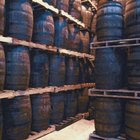
The Difference Between Single Cask & ...
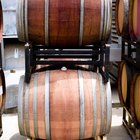
Brandy vs. Whiskey

What Liquors Are Made From Sugar Cane?

What Is the Primary Difference Between ...

Tanqueray Gin Ingredients
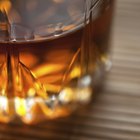
What Does VSOP Mean?

How Much Is a Single Serving Size of a ...
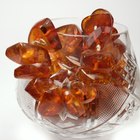
What Is Cognac Amber?

German Beer Vs. American Beer

How Long Should a Wine Collector Keep a ...

How to Store Cognac

What Causes Honey to Ferment?

What Is the Difference Between Wine & ...

Can Drinking Old Vodka Hurt You?

What Is the Highest Proof Vodka?

Is Cabernet Sauvignon a Substitute for ...

The Cocktails Invented in the 1920s

List of the Different Types of Champagne
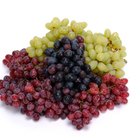
Types of Wine Listed Alphabetically

What Can You Mix With Blended Scotch?
References
- On Food and Cooking: The Science and Lore of the Kitchen; Harold McGee
- Bloomberg: Whisky Wars -- Single Malt Battle with Blended Scotch Rages
- Whisky Advocate: Understanding Whiskey
Writer Bio
Fred Decker is a trained chef and prolific freelance writer. In previous careers, he sold insurance and mutual funds, and was a longtime retailer. He was educated at Memorial University of Newfoundland and the Northern Alberta Institute of Technology. His articles have appeared on numerous home and garden sites including GoneOutdoors, TheNest and eHow.
Photo Credits
Jeff J Mitchell/Getty Images News/Getty Images